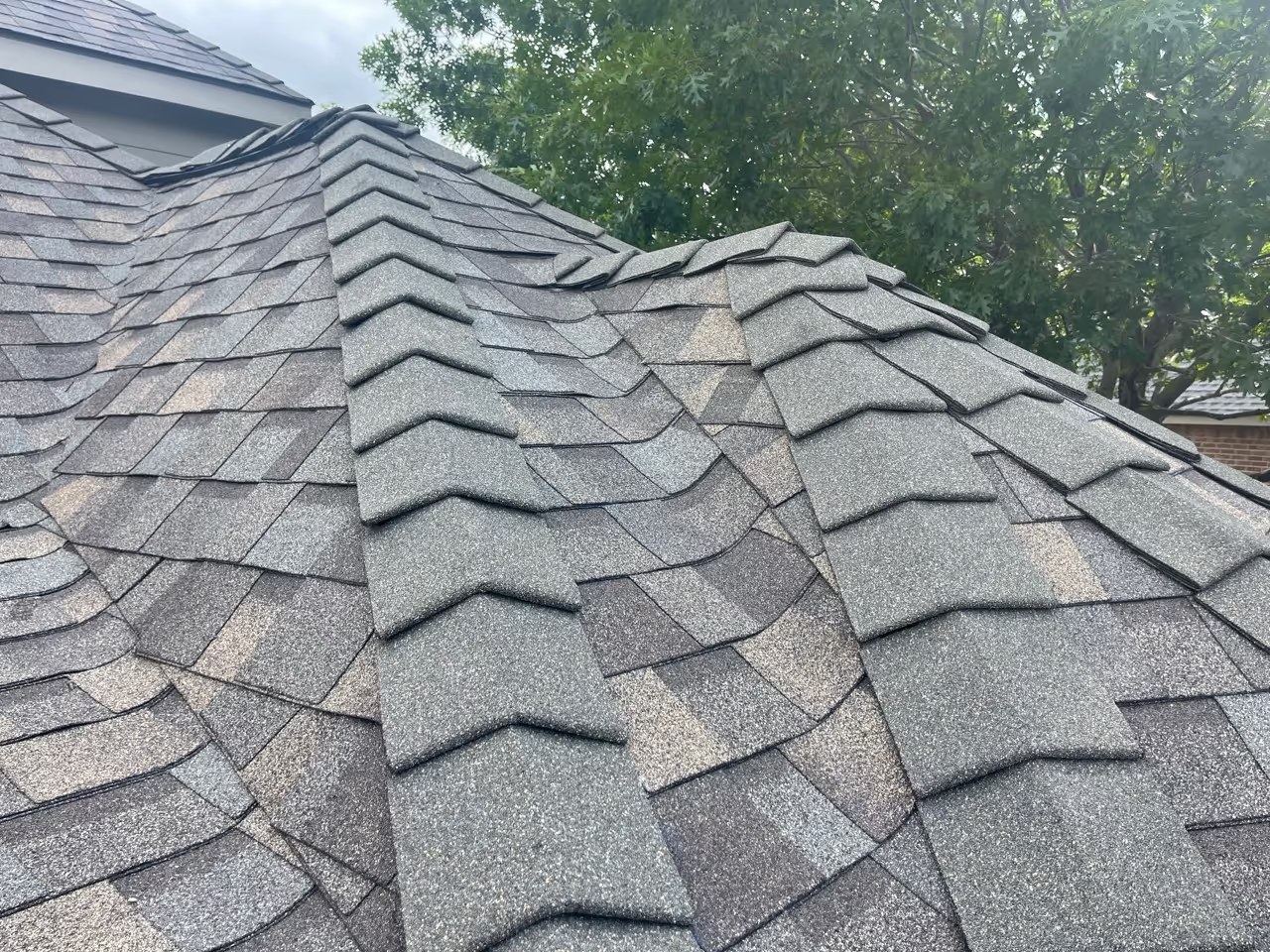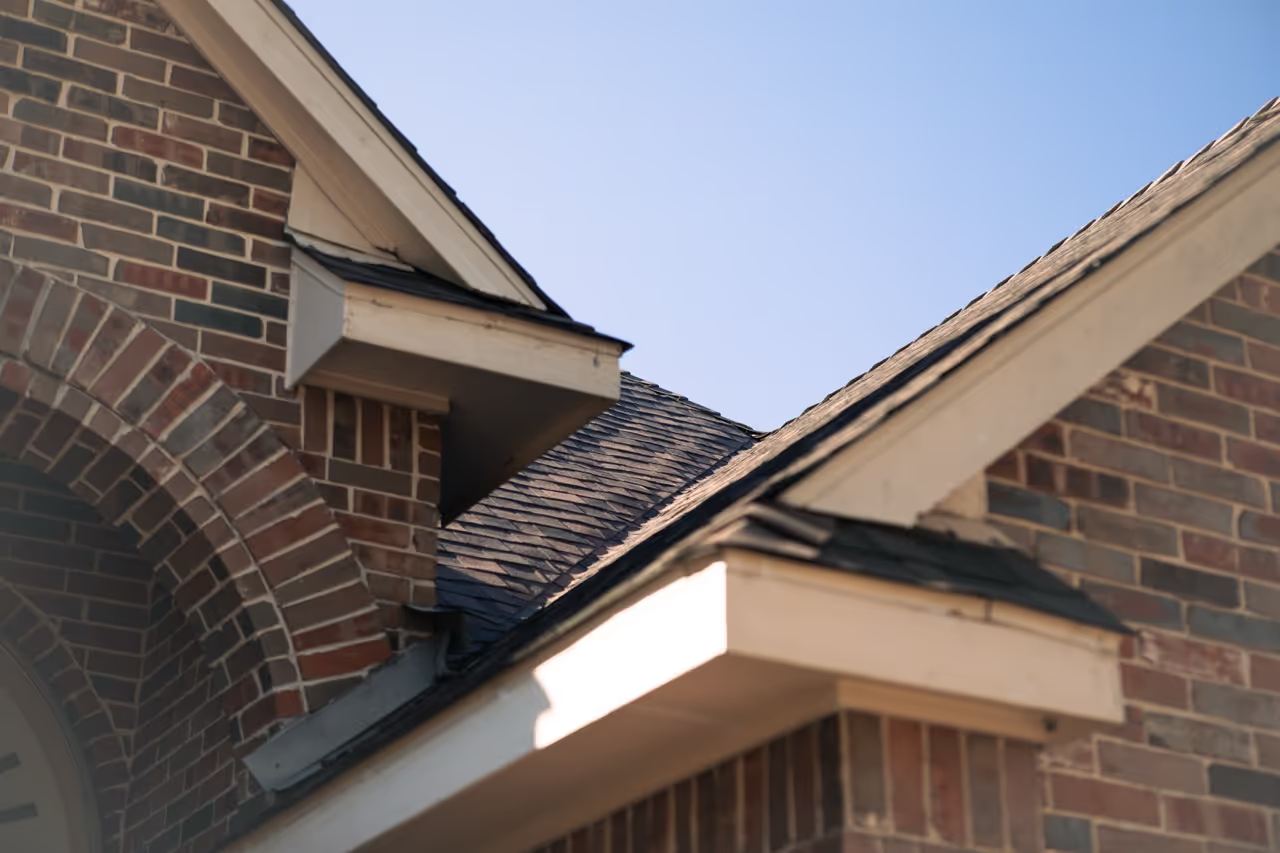View Quick Summary
Don't wait for storm warnings. Phil's comprehensive spring preparation checklist helps North Texas homeowners protect their roofs before severe weather strikes. Essential tasks, timing, and professional insights from 20+ years of DFW storm experience.
Why Spring Storm Preparation Matters in North Texas
Spring storm season in North Texas isn't a maybe. It's a certainty that arrives every year with devastating potential.
From March through June, DFW faces its most dangerous weather period. Supercells drop baseball-sized hail, straight-line winds exceed 80 mph, and tornadoes can form with little warning.
After 20+ years responding to storm damage across Rockwall and DFW, Phil Goodwin knows preparation makes the difference between minor repairs and total roof replacement.
North Texas Storm Season Statistics
The numbers reveal why preparation is critical:
- Peak activity: April and May see 60% of annual severe weather events
- Hail frequency: DFW averages 9 significant hail events annually
- Property damage: $2.3 billion in annual storm damage across North Texas
- Insurance claims: 40% of annual roof claims occur during spring months
- Wind events: Straight-line winds cause 30% more damage than tornadoes
These aren't random events. They're predictable patterns that smart homeowners prepare for systematically.
The Cost of Being Unprepared
Unprepared homes suffer dramatically more damage during storms.
A loose shingle becomes a missing section. A clogged gutter becomes interior flooding. Small problems become insurance nightmares when severe weather strikes unprepared homes.
Preparation costs hundreds. Emergency repairs cost thousands.
February Preparation: Foundation Month
February represents your last chance for thorough preparation before peak storm season begins.
Use mild weather to address issues that become dangerous or impossible to fix once storms arrive.
Professional Roof Inspection
Schedule professional inspection to identify vulnerabilities before storm season:
- Shingle condition assessment: Identify loose, cracked, or missing shingles
- Flashing evaluation: Check seals around chimneys, vents, and valleys
- Gutter system review: Ensure proper drainage and secure attachment
- Ventilation check: Verify ridge and soffit vents are clear and functional
- Structural assessment: Look for sagging or stress indicators
Professional inspections cost $200-$400 but identify problems that could cost thousands if storms exploit them.
Tree and Landscape Management
Remove storm hazards while weather permits safe tree work:
- Dead branch removal: Eliminate projectiles that target your roof
- Crown thinning: Reduce wind resistance in healthy trees
- Distance assessment: Trim branches within 10 feet of roof
- Root inspection: Check for compromised trees that might fall
- Drainage clearing: Remove debris from storm drainage areas
Ready for professional pre-storm preparation? Phil provides comprehensive roof inspections that identify and address vulnerabilities before storms strike. Call 844-714-7445 to schedule your February inspection.
March Action Items: Critical Repairs
March weather offers the last reliable window for major repairs before unpredictable spring storms begin.
Focus on structural issues and waterproofing that storms will test severely.
Shingle Repair and Replacement
Address shingle problems identified during February inspection:
- Loose shingle securing: Re-nail or replace inadequately fastened shingles
- Cracked shingle replacement: Prevent water infiltration points
- Granule loss evaluation: Replace shingles with excessive granule loss
- Edge sealing: Secure starter strips and ridge caps
- Valley reinforcement: Ensure proper valley flashing and drainage
These repairs cost $300-$1,500 depending on extent but prevent major damage during storms.
Flashing and Sealant Updates
Waterproof vulnerable penetrations before spring rains arrive:
- Chimney flashing: Replace deteriorated step flashing and counter-flashing
- Vent boot replacement: Install new rubber boots around plumbing vents
- Skylight maintenance: Reseal and inspect skylight flashing systems
- HVAC penetrations: Seal around units and ductwork penetrations
- Caulk renewal: Replace old caulk around all roof penetrations
Gutter System Optimization
Ensure gutters can handle spring's heavy rainfall and debris:
- Thorough cleaning: Remove all debris from gutters and downspouts
- Fastener tightening: Secure loose hangers and spikes
- Slope adjustment: Ensure proper drainage toward downspouts
- Downspout extension: Direct water away from foundation
- Gutter guard installation: Reduce maintenance and improve flow
April Storm Season Readiness
April marks the beginning of peak storm season. Your home should be fully prepared by now.
Focus on final preparations and emergency planning rather than major repairs.
Final Safety Inspection
Complete your pre-storm safety check:
- Attic ventilation verification: Ensure proper airflow to prevent pressure buildup
- Interior leak detection: Check for any signs of water infiltration
- Roof deck assessment: Look for soft spots or structural concerns
- Insulation condition: Verify insulation isn't compromised by moisture
- Emergency access planning: Ensure safe attic access for post-storm inspection
Documentation and Insurance Preparation
Prepare for potential insurance claims before damage occurs:
- Comprehensive photography: Document current roof condition thoroughly
- Insurance policy review: Understand coverage limits and deductibles
- Contractor information: Have trusted contractor contact information ready
- Emergency contact list: Include insurance agent and company claim numbers
- Important document storage: Keep insurance docs in waterproof, accessible location
This preparation saves days during claim processing when every hour matters.
Emergency Supply Kit Assembly
Prepare emergency materials for immediate post-storm response:
- Tarps and fasteners: Heavy-duty tarps with secure fastening systems
- Safety equipment: Hard hats, gloves, and non-slip footwear
- Documentation tools: Cameras, measuring tapes, and notebooks
- Basic repair supplies: Roofing cement, patches, and temporary sealing materials
- Lighting equipment: Flashlights, headlamps, and extra batteries
May Peak Activity Monitoring
May represents the most dangerous month for North Texas severe weather.
Focus on vigilance, monitoring, and immediate response planning rather than preventive work.
Weather Monitoring Systems
Establish reliable weather information sources:
- Weather alerts: Sign up for local emergency weather notifications
- Radar apps: Install quality weather radar applications
- Emergency radio: Battery or hand-crank weather radio for power outages
- Neighborhood networks: Connect with neighbors for storm information sharing
- Professional monitoring: Consider professional weather monitoring services
Immediate Pre-Storm Actions
When severe weather threatens, complete these final preparations:
- Secure loose items: Bring in or tie down anything that could become projectiles
- Photograph conditions: Document pre-storm roof and property condition
- Close storm shutters: Protect windows from hail and wind
- Charge devices: Ensure phones and devices are fully charged
- Review safety plan: Confirm family knows where to shelter
Storm approaching? Phil offers emergency preparation consultations to help you take the right actions when severe weather threatens. Call 844-714-7445 for immediate guidance.
Post-Storm Response Protocol
Your response in the first hours after a storm determines insurance claim success and prevents secondary damage.
Immediate Safety Assessment
Safety comes first in post-storm evaluation:
- Power line hazards: Assume all downed lines are energized
- Structural damage: Don't enter buildings with obvious structural damage
- Roof stability: Never walk on potentially damaged roofs
- Water hazards: Avoid standing water that might be electrically charged
- Air quality: Watch for gas leaks or other airborne hazards
Documentation Process
Systematic documentation protects your insurance claim:
- Exterior photography: Document all visible damage from multiple angles
- Interior inspection: Check for water infiltration or structural issues
- Debris documentation: Photograph hail stones with size references
- Neighbor damage survey: Note widespread damage patterns
- Weather verification: Save weather reports and radar images
Temporary Protection Measures
Prevent additional damage while waiting for permanent repairs:
- Tarp installation: Cover damaged areas to prevent water infiltration
- Water removal: Extract standing water immediately
- Debris clearing: Remove debris that could cause additional damage
- Ventilation management: Ensure proper air circulation to prevent mold
- Utility safety: Shut off damaged electrical or gas systems
Professional vs. DIY Tasks
Understanding which preparation tasks you can handle safely versus those requiring professional expertise saves time and prevents injuries.
Safe DIY Preparation Tasks
Homeowners can safely handle these preparation activities:
- Ground-level gutter cleaning: Using stable ladders and proper safety
- Debris removal: Clearing leaves and branches from accessible areas
- Basic caulking: Sealing minor gaps around vents and penetrations
- Documentation photography: Taking photos from ground level
- Emergency kit assembly: Preparing supplies and materials
Professional-Only Tasks
These activities require professional expertise and equipment:
- Roof surface inspection: Walking on roofs requires experience and safety equipment
- Structural repairs: Any work affecting roof structure or integrity
- Flashing replacement: Complex waterproofing that affects home protection
- Electrical work: Any repairs involving electrical systems or connections
- Major tree work: Removing large branches or trees near structures
When to Call Professionals
Don't hesitate to call professionals when you encounter:
- Height concerns: Any work requiring ladder use above one story
- Structural questions: Uncertainty about roof or building integrity
- Complex repairs: Projects involving multiple systems or materials
- Insurance coordination: Situations requiring professional documentation
- Time constraints: When thorough preparation must be completed quickly
Seasonal Maintenance Calendar
Successful storm preparation requires year-round attention to roof health and maintenance.
Fall Maintenance (September-November)
Post-storm season recovery and winter preparation:
- Storm damage assessment: Evaluate any damage from spring/summer storms
- Gutter cleaning: Remove leaves and debris before winter
- Caulk inspection: Check and replace weathered sealants
- Attic ventilation: Ensure proper airflow for winter moisture control
- Tree maintenance: Remove hazardous branches before winter winds
Winter Maintenance (December-February)
Planning and indoor preparation during mild weather:
- Insurance review: Update coverage and understand policy changes
- Contractor research: Identify and vet potential repair contractors
- Emergency planning: Update family emergency plans and supplies
- Interior inspection: Check for signs of roof problems from inside
- Spring preparation planning: Schedule inspections and gather supplies
Summer Monitoring (June-August)
Post-spring assessment and heat-related maintenance:
- Storm damage evaluation: Assess any spring storm damage
- Heat stress monitoring: Watch for heat-related roof problems
- Ventilation optimization: Ensure adequate airflow during hot months
- UV damage inspection: Check for sun-related deterioration
- Fall preparation: Begin planning for next season's maintenance
Insurance and Documentation Best Practices
Proper preparation includes understanding how preparation affects insurance coverage and claim success.
Pre-Storm Documentation Requirements
Insurance companies favor well-documented properties:
- Annual condition photos: Document roof condition each year
- Maintenance records: Keep receipts for all roof-related work
- Professional inspections: Regular professional evaluations
- Repair documentation: Photos and receipts for any repairs
- Upgrade records: Document improvements like Class 4 shingles
Preparation Impact on Claims
Good preparation strengthens insurance claims in several ways:
- Baseline establishment: Pre-storm photos prove damage is storm-related
- Maintenance demonstration: Records show responsible homeownership
- Quick response capability: Preparation enables faster claim filing
- Damage limitation: Preparation reduces secondary damage claims
- Professional relationships: Established contractor relationships speed repairs
Take Action: Start Your Preparation Today
Spring storm season waits for no one. Every day of preparation you delay is protection you lose.
North Texas weather patterns don't change. The storms will come. The only question is whether your roof will be ready.
Don't wait for storm warnings to discover your roof's vulnerabilities. Smart preparation happens during calm weather, not when sirens are sounding.
Phil Goodwin has helped hundreds of DFW families prepare for and recover from spring storms. His systematic approach identifies vulnerabilities before they become disasters and ensures your home is ready for whatever North Texas weather brings.
Ready to prepare your roof for spring storm season? Phil provides comprehensive preparation services including professional inspections, vulnerability assessments, and repair coordination. Call 844-714-7445 now to schedule your pre-storm preparation consultation. Don't wait until warnings are issued to discover what your roof needs.
Check Out Some Of Our Other Blogs

Get Your Free Storm Damage Inspection
Don't wait for small roof problems to become expensive disasters. We'll inspect your roof completely free and show you exactly what needs attention. If we find storm damage, we'll help you get it covered by insurance. If your roof is fine, you'll have peace of mind.




